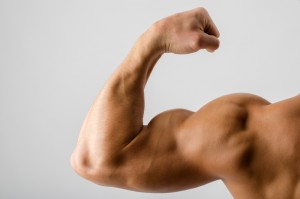Posted on July 07, 2016 by Jenny Cromack
Having recently found out I have my first (co-authored) scientific publication, I thought I would share with you a brief overview of Muscle Dysmorphia (MD), which is the focus of the paper.
What is Muscle Dysmorphia?
It is a form of body dysmorphic disorder specifically concerned with muscularity. It has also been termed ‘bigorexia’ or ‘reverse anorexia’, as may have been seen in recent media. In short it involves individuals being preoccupied with their own appearance, and perceiving themselves as insufficiently muscular. Their lives become taken over by muscle building activities such as weightlifting, dieting to increase mass, or engaging in risky, drug based, behaviours.
Who is likely to experience Muscle Dysmorphia?
Recently the BBC reported that 10% of British gym using males experienced Muscle Dysmorphia equating to approximately 427, 000 UK males. It has been suggested that the onset of Muscle Dysmorphia, on average, occurs around the age of 19 years. Although typically linked to men, Muscle Dysmorphia also appears to be associated with females. Sexual orientation statistics suggest that heterosexual experience higher levels of Muscle Dysmorphia than homosexual individuals, as do those engaged in romantic relationships compared to single individuals.
Few physical characteristics seem to be linked to MD, with only fat-free-mass index, and BMI, being related to MD, but with most individuals engaging in weight training based exercise this may not be surprising.
What symptoms are related to Muscle Dysmorphia?
Muscle Dysmorphia has been linked (sometimes partially) to several symptoms, however, a thorough systematic review of Muscle Dysmorphia has yet to be conducted so these are based upon the current existing studies, and one of my own reviews that is currently ongoing. Some of these symptoms include:
- Body Dysmorphic Disorder
- Obsessive Compulsive Disorder
- Eating Disorders
- Depression
- Anxiety
- Hostility
- Body Dissatisfaction
- Perfectionism
- Drive For Muscularity
- Self-Esteem
- Negative Affect
What is missing in the research?
The current level of knowledge is limited in those clinically diagnosed with Muscle Dysmorphia, and more work needs to be done in specific, well-defined, populations. As well as this, we need more qualitative, and life-history, approaches that will help us further understand what life is like living with Muscle Dysmorphia, and shed some light on the development of the condition. Through this we could then start to highlight pathways to help those populations who experience Muscle Dysmorphia, and associated symptoms.
Recommended Reading:
Tod, D., Edwards, C., & Cranswick, I. (2016). Muscle Dysmorphia: current insights. Psychology Research and Behaviour Management, 9, 1-10.
Maida, D., M., & Armstrong, S., L. (2005). Classification of Muscle Dysmorphia. International Journal of Men’s Health, 4, 73-91.


